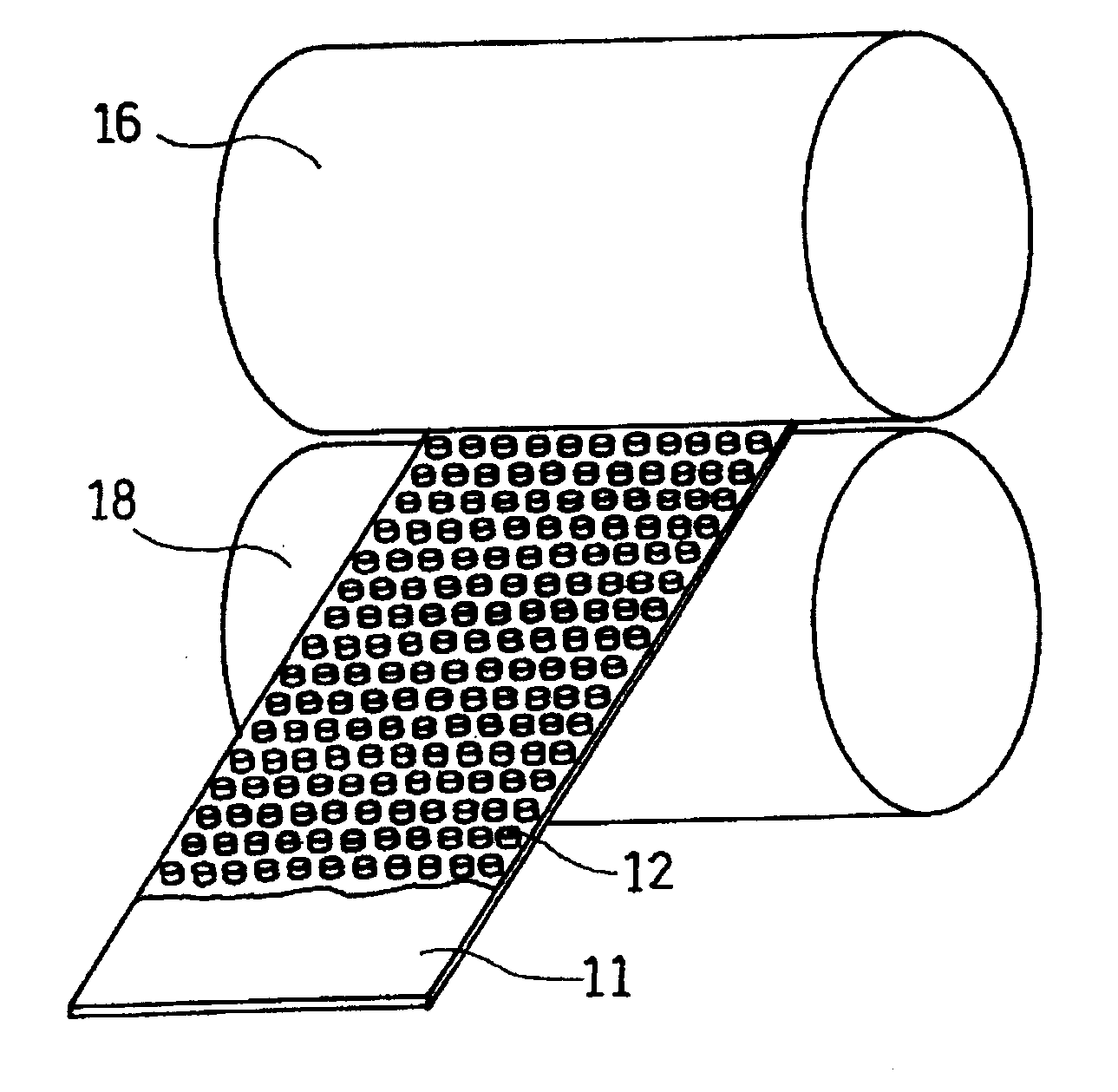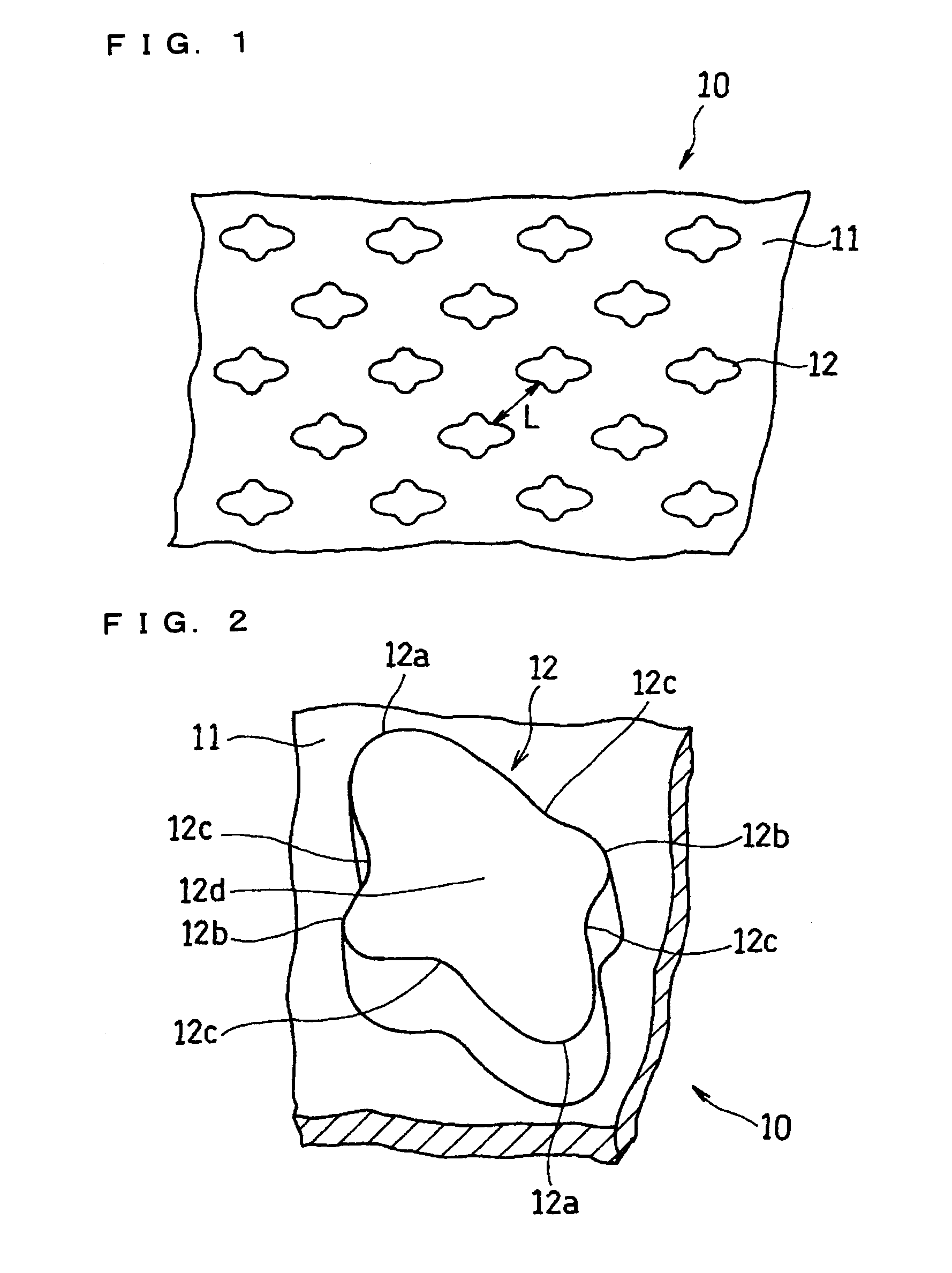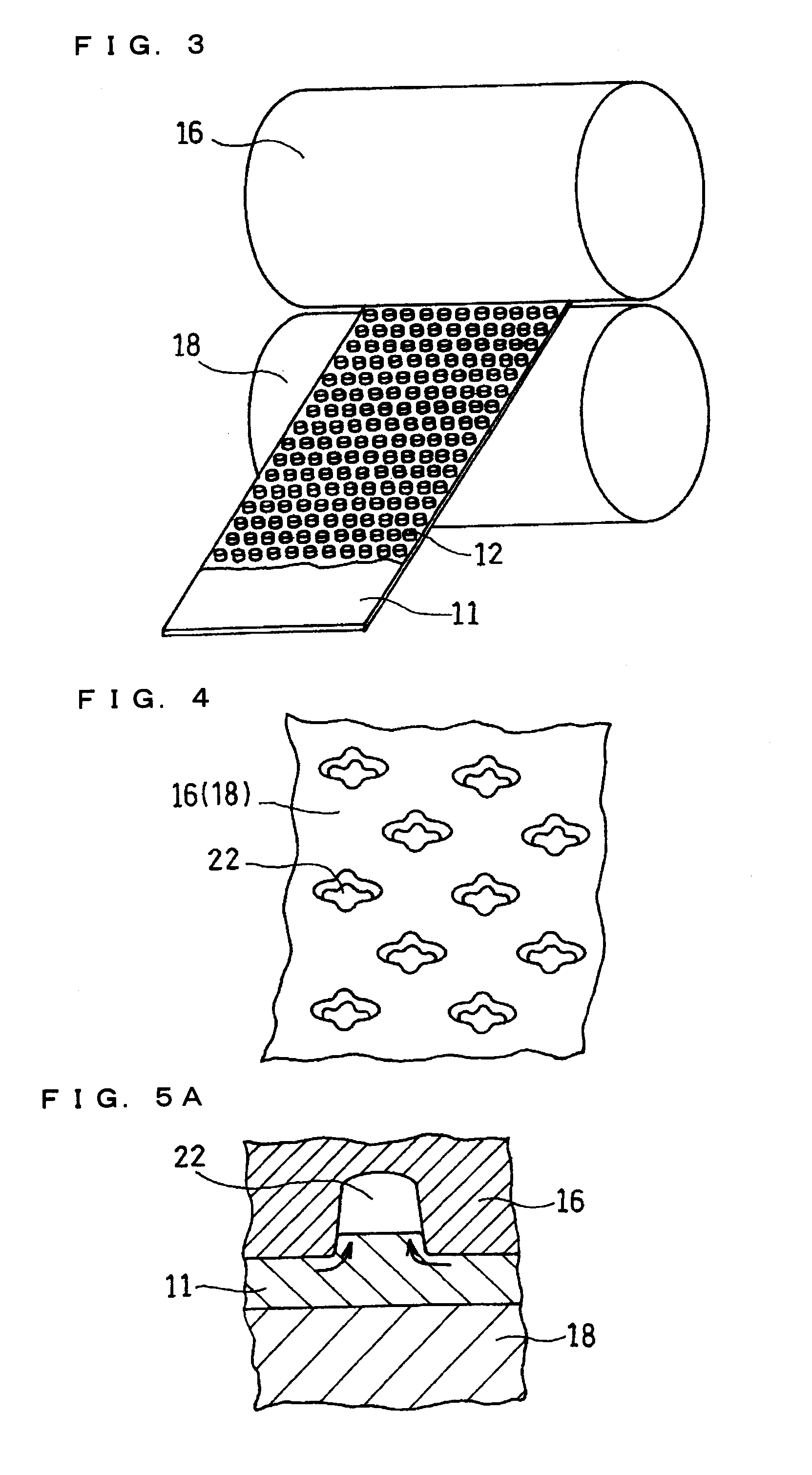Current collector for non-aqueous electrolyte secondary battery, electrode for non-aqueous electrolyte secondary battery, production methods thereof, and non-aqueous electrolyte secondary battery
a technology of non-aqueous electrolyte and current collector, which is applied in the direction of cell components, final product manufacturing, sustainable manufacturing/processing, etc., can solve the problems of active material layer falling off the current collector, affecting the performance of the electrode, and reducing the adhesion between the active material layer and the current collector, so as to reduce the compressive stress, improve the flexibility, and suppress the current collector from becoming wrinkled or the active material layer
- Summary
- Abstract
- Description
- Claims
- Application Information
AI Technical Summary
Benefits of technology
Problems solved by technology
Method used
Image
Examples
embodiment 1
[0112]FIG. 1 is a plan view schematically showing the structure of a current collector for a non-aqueous electrolyte secondary battery according to Embodiment 1 of the invention. FIG. 2 is an enlarged perspective view of a part thereof.
[0113]A current collector 10 illustrated therein includes a metal foil 11 shaped like a long strip and a large number of protrusions 12 formed on at least one face of the metal foil 11 in a predetermined arrangement.
[0114]As illustrated in FIG. 2, the protrusion 12 is substantially rhombic in a plan view. More specifically, when the protrusion 12 is viewed from the direction perpendicular to the surface of the metal foil 11, the protrusion 12 has end portions 12a in the major axis direction (hereinafter referred to as major axis end portions) and end portions 12b in the minor axis direction (hereinafter referred to as minor axis end portions), and these end portions 12a and 12b are curved so as to protrude outward. Also, the protrusion 12 has middle p...
embodiment 2
[0160]Next, Embodiment 2 of the invention is described. FIG. 7 is an enlarged perspective view of a part of a current collector according to Embodiment 2 of the invention.
[0161]A current collector 10A illustrated in FIG. 7 has a protrusion 26, and major axis end portions 26a and minor axis end portions 26b are curved so as to protrude outward, while middle portions 26c between the major axis end portions 26a and the minor axis end portions 26b are curved so as to be recessed inward, just like the current collector 10 illustrated in FIG. 2.
[0162]The current collector 10A of FIG. 7 is different from the current collector 10 of FIG. 2 in that the major axis end portions 26a of the protrusion 26 are higher than the minor axis end portions 26b.
[0163]Between the two major axis end portions 26a is a main top face 26d, which is as high as or higher than the end portions 26a. On both sides of the main top face 26d are sub-top faces 26e, which correspond to the two minor axis end portions 26...
embodiment 3
[0165]Next, Embodiment 3 of the invention is described. FIG. 8 is an enlarged perspective view of a part of a current collector according to Embodiment 3 of the invention.
[0166]A current collector 10B illustrated in FIG. 8 has a protrusion 28, and major axis end portions 28a and minor axis end portions 28b are curved so as to protrude outward, while middle portions 28c between the major axis end portions 28a and the minor axis end portions 28b are curved so as to be recessed inward, just like the current collector 10A illustrated in FIG. 7. Also, the major axis end portions 28a are higher than the minor axis end portions 28b. Between the two major axis end portions 28a is a main top face 28d, which is as high as or higher than the end portions 28a. On both sides of the main top face 26d are sub-top faces 26e, which correspond to the two minor axis end portions 26b, respectively.
[0167]The current collector 10B of FIG. 8 is different from the current collector 10A of FIG. 7 in that th...
PUM
| Property | Measurement | Unit |
|---|---|---|
| Fraction | aaaaa | aaaaa |
| Length | aaaaa | aaaaa |
| Height | aaaaa | aaaaa |
Abstract
Description
Claims
Application Information
 Login to View More
Login to View More - R&D
- Intellectual Property
- Life Sciences
- Materials
- Tech Scout
- Unparalleled Data Quality
- Higher Quality Content
- 60% Fewer Hallucinations
Browse by: Latest US Patents, China's latest patents, Technical Efficacy Thesaurus, Application Domain, Technology Topic, Popular Technical Reports.
© 2025 PatSnap. All rights reserved.Legal|Privacy policy|Modern Slavery Act Transparency Statement|Sitemap|About US| Contact US: help@patsnap.com



